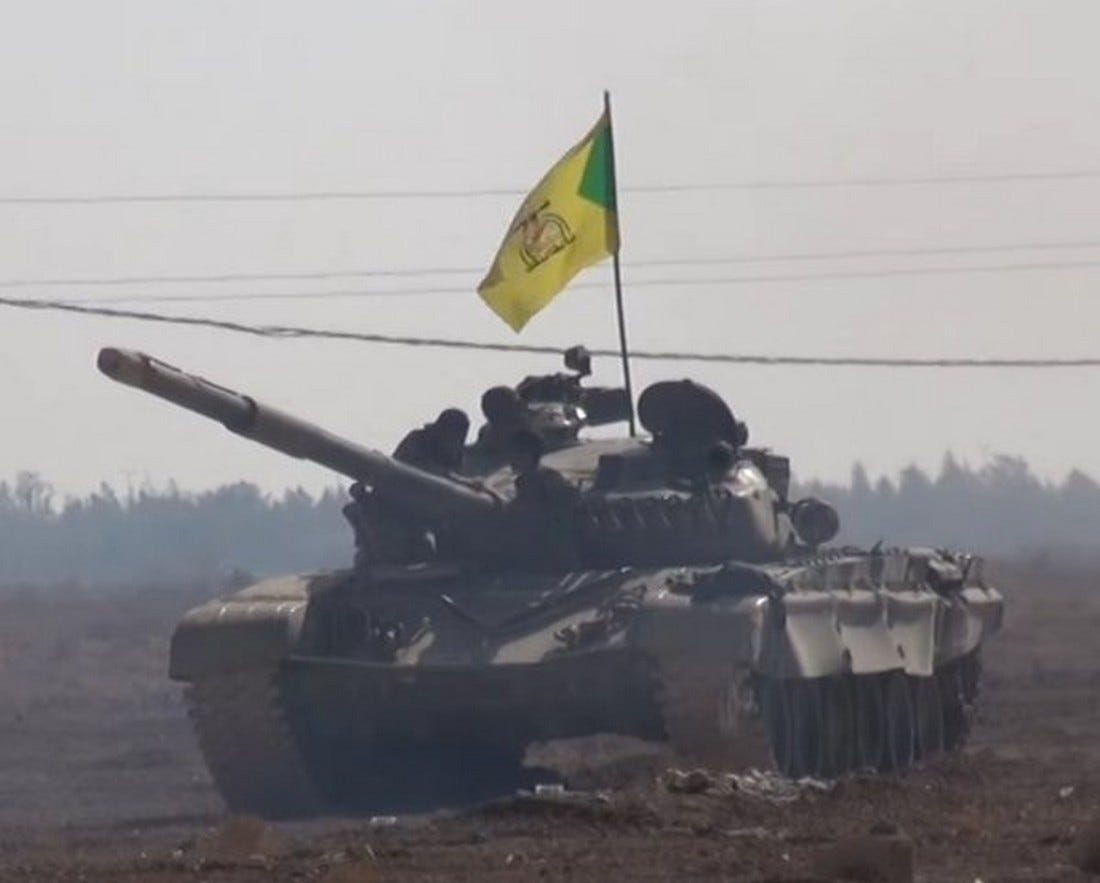
'The general impression is that the Syrian Arab Army remains the largest military force involved in the Syrian Civil War, and that — together with the so-called National Defense Forces — it remains the dominant military service under the control of government of Pres. Bashar Al Assad.
Media that are at least sympathetic to the Al-Assad regime remain insistent in presenting the image of the “SAA fighting on all front lines” — only sometimes supported by the NDF and, less often, by “allies.”
The devil is in the details, as some say. Indeed, a closer examination of facts on the ground reveals an entirely different picture. The SAA and NDF are nearly extinct.
Unsurprisingly, the regime was already critically short of troops by summer of 2012, when advisers from the Qods Force of Iran’s Islamic Revolutionary Guards Corps concluded that units organized along religious and political lines had proven more effective in combat than the rest of the Syrian military had. Thus the regime’s creation, in cooperation with Iran, of the National Defense Forces. Officially, the NDF is a pro-government militia acting as a part-time volunteer reserve component of the military. The IRGC and various other domestic and foreign actors began sponsoring specific NDF battalions. These actors included the Ba’ath Party, the Syrian Socialist National Party (SSNP), groups of Palestinian refugees living in Syria for decades — such the Popular Front for the Liberation of Palestine — the General Command and the Palestine Liberation Army and even the Gozarto Protection Force, the latter made up of local Christian Assyrian/Syriac and some Armenian communities.
This process or reorganizing the Syrian military into a gaggle of sectarian militias was nearly complete by the time when Russians launched their military intervention in the country in the summer of 2015.
Correspondingly, while planning a counteroffensive against insurgents in northern Latakia, the Russians established what they call the “4th Assault Corps” — a typical formation for what can be considered the modern-day Syrian armed forces.
A similar organization was subsequently introduced in the Damascus area, too. Although the regime can still fall back on at least five brigades of the Republican Guards Division deployed there, these units are incapable of running offensive operations. Therefore, major assaults on insurgent-held pockets in Damascus and eastern Ghouta are overseen by two brigades from the Lebanese Hezbollah, three brigades of the PLA and various of local IRGC surrogates, including the Syrian branch of Hezbollah. Units of Iraqi Shi’a militias are not only securing the Sayyida Zaynab District of southern Homs, but have also deployed to fight Syrian insurgents, too. Furthermore, IRGC-controled units of Iraq’s Hezbollah branch, Hezbollah-Syria, the PFLP-GC and the PLA played a crucial role during the offensive that resulted in the capture of Sheikh Mishkin in January 2016.
Currently, Homs and Hama appear to be the last two governorates with any kind of significant concentration of the SAA. Actually, merely the HQs of various former SAA units are still wearing their official designations. Their battalions all consist of various sectarian militias — including that of the Ba’ath.
Despite the presence of such units as the Ba’ath Commando Brigade, the city and province of Aleppo are largely controlled by Iranians, foremost the IRGC. The latter is usually said to operate three or four units in Syria. Actually, the Fatimioun Brigade (staffed by Afghan Hazars) and the Zainabioun Brigade (staffed by Pakistani Shi’a) are most often cited, while the Pasdaran have deployed four other such formations in Aleppo province alone — all staffed by their own regulars. Even larger are different contingents of Iraqi Shi’a, including nine brigade-size formations of Badhr and Sadrist movements, seven brigades of the Assaib Ahl Al Haq movement, five brigades of the Abu Fadhl Al Abbas movement, two brigades of the Iraqi Popular Mobilization Units and nine brigades staffed by Iraqi Sh’ia but which the author of this report was unable to associate with specific political movements in Iraq.
Correspondingly, there is hardly anything to be seen of the actual SAA and very little of the NDF. It’s unlikely that Al Assad has more than 70,000 troops left under his command.'
No comments:
Post a Comment